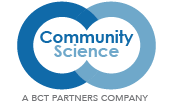The challenges of philanthropy include allocating resources while balancing short-term urgency with long-term vision, absorbing countless reports and recommendations, navigating diverse perspectives and dynamics internally and externally, and facing critiques from every direction. Watching the needle remain motionless on major indicators can drive a constant search for elusive answers, especially when taking on complex issues around equity and justice for communities that are historically disadvantaged and excluded.
In this environment, a good strategy can provide your foundation with much needed clarity. Your foundation’s strategy can also help translate its diversity, equity and inclusion (DEI), community engagement, and evaluation efforts into concrete action. This post introduces five principles that can help your foundation ensure that its core strategy maximizes its chances of advancing equity and justice. The accompanying download takes a deeper dive into these five principles and how to put them into action.
Starting with the basics: the art and science of “good” strategy.
In general, good strategy lays out a vision including what is most important to accomplish and a path to get there, guidelines for making hard decisions and tradeoffs, concrete priorities and activities, and the underlying logic, rationale, and assumptions. Because no strategy is perfect, good strategy is also dynamic and iterative to keep improving in an inherently unpredictable world.
When it comes to advancing equity and justice, good philanthropic strategy needs to consider the root causes of disadvantage and disparities, DEI, systems and policy, systemic racism, negative narratives, and other factors. Let’s face it, defining a foundation strategy to take this on can be overwhelming. Meanwhile, making things more manageable through narrow program areas, singular initiatives, an oversimplified theory of change, or superficially applying a DEI checklist can lead to missed opportunities, reinvented wheels, and/or disjointed efforts.
Five principles to help your foundation’s strategy best advance equity & justice.
Principle One: Lead with equity and justice (it’s not just a lens).
A philanthropic strategy needs to explicitly name the advancement of equity and justice as the end goal, and not simply as a lens, value, or public statement. The majority of common foundation program areas such as education, health, and economic security are about equity and justice at their core. Leading with equity and justice also means centering and honoring the lived experience and assets of those communities that are disadvantaged and excluded.
Principle Two: Recognize the big problem to solve.
Advancing equity and justice requires recognizing the reality of why disparities exist in the first place. A mountain of evidence points to the historic, central role of systems in the marginalization of communities as a function of their design. This pattern has existed for generations, is held firmly in place by various incentives and power dynamics, and drives disparities in nearly every social issue that philanthropy hopes to address. Members of disadvantaged communities face these issues simultaneously in their daily lived experience, including education, economic security, health, housing, food security, and others. While many areas may benefit from improvements, beware the pattern of scapegoating and naming new villains while losing sight of the big problem.
Principle Three: Prioritize what makes change happen.
Throughout history, there have been few approaches, or change levers, to address the big problem and advance equity and justice at a wide scale. Meanwhile, social sector efforts and resources are divided across countless, often artificially segmented, social issue areas, practices, solutions, etc. Your foundation’s strategy will have the best chances of advancing equity and justice by connecting the dots and orienting its various efforts around change levers demonstrated by history and current experience: community power, policy advocacy, narrative & messaging, systems decision points, and policy and practice models and data.
Principle Four: Understand the universe and philanthropy’s place in it.
Philanthropic strategy that advances equity and justice considers the full picture of what exists and how a foundation can best contribute to it (versus the other way around). Taking time to understand who is doing what can provide essential context for how your foundation’s strategy prioritizes its investments and partnerships, as well as your foundation’s potential role as an institution. Considering the robust research on how one’s ZIP code significantly shapes opportunities and life trajectory, this also requires examining how the big problem and equity & justice stakeholders show up in the local places that your foundation’s work has a presence.
Principle Five: Remove the false limitations, and stretch your comfort zone.
Philanthropic strategy that advances equity and justice entails uncertainty. Distinct impact goals that can be predictably achieved within exactly one to three years and with 100% attribution? Not likely. For your foundation’s strategy to have a chance, your team will need to work through any false limitations and discomfort that may hinder full understanding of the big problem and investing in what makes change happen. Compare the perceived risks of this to the far greater risk of philanthropy continuing to spin its collective wheels for decades to come.
Putting it all together and moving forward
A good philanthropic strategy can help your foundation advance equity and justice by addressing the big problem head on and prioritizing what actually makes change happen. Your foundation likely already has multiple forums for discussing, developing, assessing, and refining its strategy — from formal strategic planning to board meetings to DEI and evaluation efforts. No matter where you are starting from, the Five Principles provide a clear path and next steps for your foundation, and for philanthropy as a field, to move forward.
We’re here to help. If your strategic plan could use a fresh perspective. Reach out to us, we will be happy to talk with you about solutions and provide a free consult. Reach us here, and let’s do some good work together.

